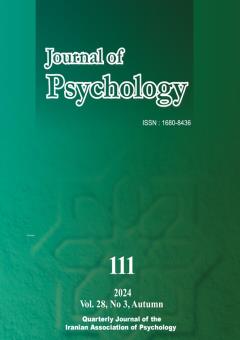Preparation two short and parallel forms of the long form of Trust in God (TiG) scale
Subject Areas :
Mostafa koochakzaei
1
![]() ,
Bagher Ghobari Bonab
2
,
Bagher Ghobari Bonab
2
![]() ,
fariba hassani
3
,
Mahdi Davaei
4
,
fariba hassani
3
,
Mahdi Davaei
4
1 - Faculty of Psychology and Educational Sciences, Islamic Azad University, Central Tehran Branch, Tehran, Iran.
2 - University of Tehran
3 - Faculty of Psychology and Educational Sciences, Islamic Azad University, Central Tehran Branch, Tehran, Iran.
4 - Faculty of Psychology and Educational Sciences, Islamic Azad University, Central Tehran Branch, Tehran, Iran.
Keywords: Trust in God scale, parallel forms, psychometric properties,
Abstract :
The present study aimed to shorten and prepare two parallel forms of the Trust in God (TiG) scale and examine their psychological characteristics in married men and women. According to the purpose, the current research is of the applied type, and in terms of the data collection method, it is descriptive. The research population included all married persons in the north, south, east, west, and center of Tehran, from which 773 people were selected using Cohen's sampling formula and multi-stage cluster sampling method. Confirmatory factor analysis and correlation measurement with other tools were used to investigate the psychometric properties of parallel forms. The results showed that both parallel forms of TiG scale have good fit indices in men and women, which indicated the appropriateness of the construct validity of TiG short forms. Cronbach's alpha coefficient and correlation between the dimensions of two parallel forms were used to check the reliability, and the results indicated that the values in all three dimensions of behavior, cognition, and emotion of TiG forms were appropriate. Also, all dimensions in both forms of TiG showed positive and significant correlations with the subscales of secure attachment to God and secure attachment of adults; on the contrary, they had negative and significant correlations with the subscales of anxious attachment to God, avoidant attachment to God, and anxious attachment of adults, which shows the appropriate convergent and divergent validity. In conclusion, it can be said both parallel forms have suitable psychometric properties for psychological research.
